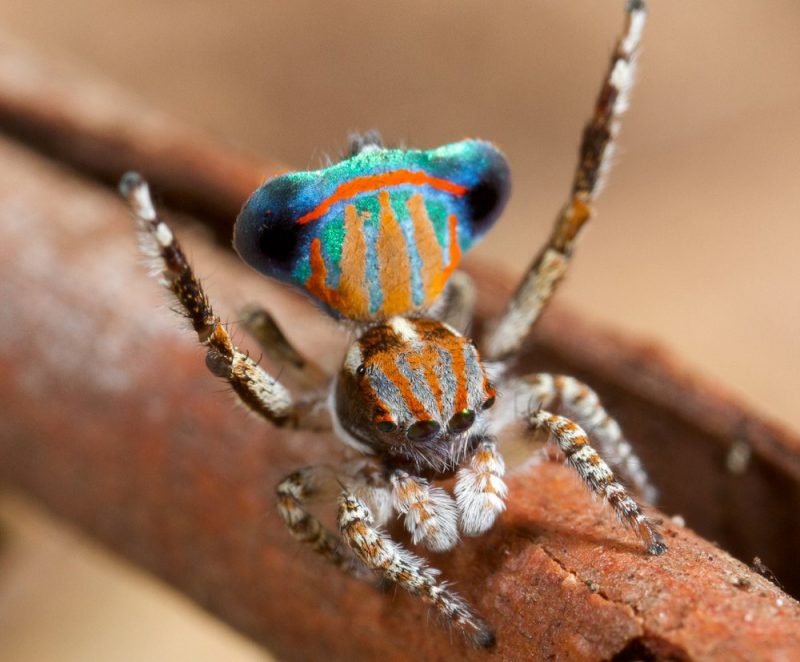Tiny, fluffy, and colourful dancers – Charismatic peacock spiders found at Piccaninnie Ponds
After seeing so many beautiful pictures of peacock spiders (Maratus spp.) on social media recently, I decided to head out bush myself in search of this elusive type of jumping spider. Knowing how small they are (only 3-5 mm), I wasn’t feeling overly confident but accompanied by my brother Terry, we headed down to Piccaninnie Ponds Conservation Park.
I knew what type of coastal vegetation they like to live on so we honed in on this plant, and within a matter of just five minutes of searching, seeing ants, flies, other tiny insects, then bam – peacock spider!

The fabulous Maratus tasmanicus, one of the species I found at Piccaninnie Ponds. Photo: Jurgen Otto
When you see a male there’s no mistaking its stunning iridescent blues, greens, reds and yellows, aptly named after the peacock. The breeding season is roughly from September to December, this is when the males are out hunting for females to mate with. The girls are plain in colour, browns and greys, nothing like the striking males.
When a female is sighted, males vibrate their pedipalps (short fluffy appendages on their head), then their third set of legs, which are longer and different coloured to the other 6 legs, go up in the air and wave around like a flag. Next the abdomen raises up, showing off his iridescent splendour. Some Maratus species even have side flaps which they unfurl to make them look even bigger and prettier, all the while dancing side to side. If the female is receptive to him and likes the way he dances, she will allow him to mate. Then it’s a fast get away for the male, because she may eat him (and if she doesn’t like his dancing, he meets the same demise). Words can’t do justice to the incredible showmanship of the male peacock spider’s performance, so I highly recommend you take a look at this video from the BBC’s Earth with commentary from David Attenborough.
So far we are proud to say we have found two species of peacock spider, Maratus tasmanicus and Maratus albus, here in the South East of South Australia. Maratus tasmanicus was named and described in 2013, with the closest record being at Warrnambool. Meanwhile Maratus albus was named and described in 2016 with its closest populations on Kangaroo Island SA and over the border in Victoria. Prior to 2011, there were only seven known species of peacock spider, but thanks mainly to a German-born, Sydney-based biologist named Jurgen Otto – Peacock Spider Man – there are now 70 species named! More are being discovered all the time, so who knows – we may even have a new one in our own backyard! To find out more about the incredible peacock spiders, which are only found in Australia, have a look at Jurgen’s website, especially the photo gallery!
Please get in contact with me if you are interested in seeing this tiny iridescent spider, or are interested in helping me with future hunts.


